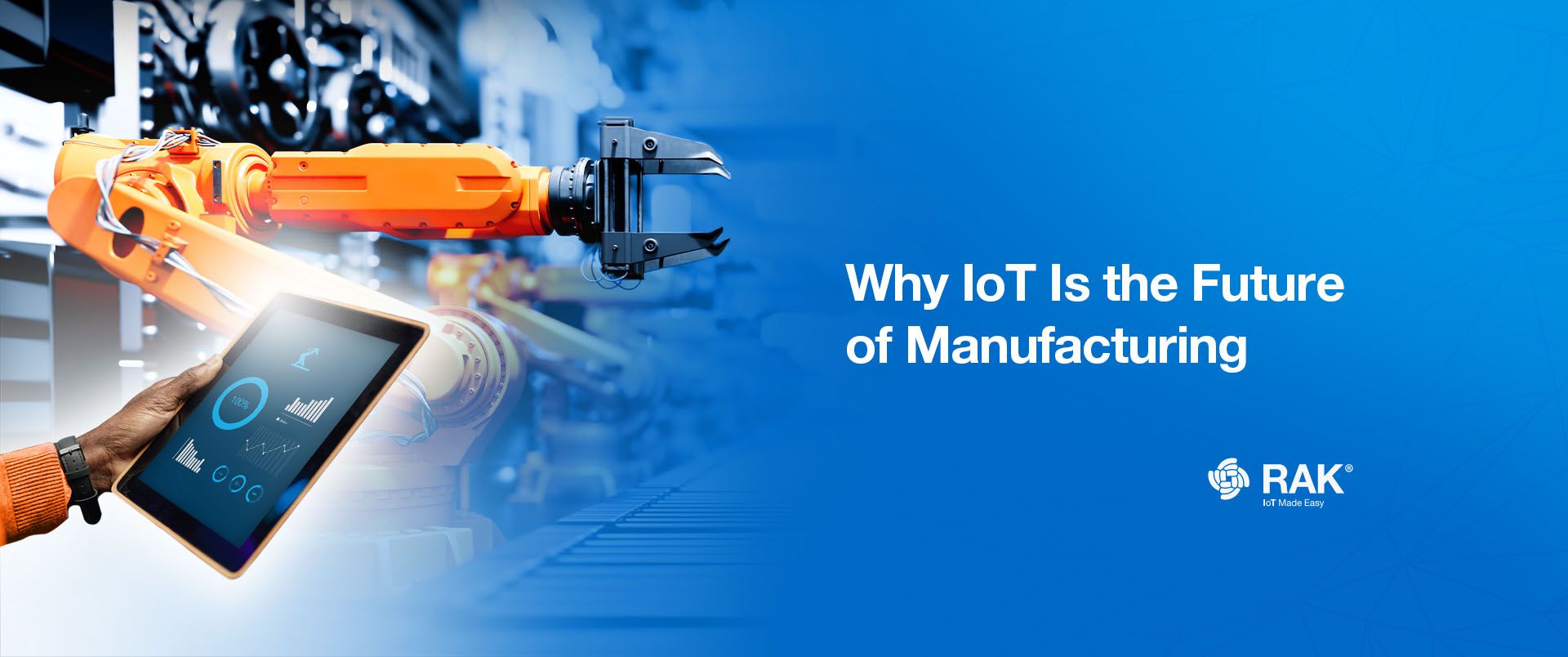How AI and IoT Are Revolutionising the Industrial Sector
As technology continues to advance, Artificial Intelligence (AI) and the Internet of Things (IoT) have become critical components of the industrial sector. AI and IoT are revolutionizing the way companies operate by providing automation, optimization, and real-time data analysis.
AI refers to the ability of machines to learn and improve on their own through algorithms and predictive models. IoT, on the other hand, refers to the interconnection of devices and machines through the internet, enabling them to exchange data and perform actions without human intervention.
The significance of AI and IoT in the industrial sector cannot be overstated. They have the potential to increase productivity, reduce costs, and improve quality control. By providing real-time data, they enable companies to make informed decisions and react quickly to changes in the market.
This article will explore how AI and IoT are transforming the industrial sector. We will discuss their manufacturing, supply chain management, and predictive maintenance applications. We will also highlight the advantages of using these technologies and the potential challenges and barriers to their implementation.
Moreover, we will provide case studies of companies that have successfully adopted AI and IoT in their operations, highlighting the benefits and challenges of each case study. Finally, we will discuss the future of AI and IoT in the industrial sector and the possibilities for innovation and advancement.
In summary, integrating AI and IoT in the industrial sector is a game-changer, and it is poised to transform how companies operate. Join us as we explore the exciting possibilities of AI and IoT in the industrial sector.
Applications of AI and IoT in The Industrial Sector
AI and IoT technologies are transforming the manufacturing process, making it faster, more efficient, and less prone to errors. Manufacturers are using these technologies to improve product quality, reduce downtime, and increase production output.
- Predictive Maintenance
This is one of the most significant advantages of AI and IoT in manufacturing. Predictive maintenance is a process that involves using data to predict when machines will fail, allowing companies to perform maintenance before a breakdown occurs. Manufacturers can reduce downtime, minimize costs, and avoid catastrophic failures by implementing predictive maintenance. - Production Optimization
In addition to predictive maintenance, AI and IoT technologies are also being used to optimize production. By providing real-time data on the production process, these technologies enable manufacturers to adjust their operations and improve their production output. For example, manufacturers can use AI and IoT to analyze the production line and identify areas where bottlenecks occur, allowing them to reconfigure the line and improve efficiency. - Supply Chain Management
AI and IoT are also beneficial in supply chain management. By using these technologies, companies can track products as they move through the supply chain, enabling them to make informed decisions about production, inventory, and shipping. This data can help companies optimize their inventory levels, reduce waste, and improve delivery times. - Quality Control
Furthermore, AI and IoT can be used to improve quality control in the manufacturing process. By using sensors and cameras, manufacturers can detect defects and errors in real time, enabling them to correct issues before they escalate. This helps manufacturers reduce waste, improve quality control, and increase customer satisfaction.


Advantages of Using AI and IoT in The Industrial Sector
The integration of AI and IoT in the industrial sector offers a plethora of advantages. These technologies have the potential to reduce costs, increase efficiency, and improve safety in the workplace. Let's take a closer look at some of the benefits of using AI and IoT in the industrial sector.
- Cost Reduction
Firstly, AI and IoT technologies can significantly reduce costs in the industrial sector. According to a report by Accenture, by 2035, AI and IoT technologies are expected to generate over $14 trillion in additional economic activity. Additionally, the report estimates that these technologies can reduce maintenance costs by up to 30%, energy costs by up to 25%, and raw material costs by up to 20%. - Improved Safety
Secondly, AI and IoT can improve worker safety by providing real-time data on the manufacturing process. For instance, sensors can detect when a machine is running at high temperatures, which can indicate a potential safety hazard. This data can be used to prevent accidents and improve worker safety. Moreover, AI and IoT can be used to perform predictive maintenance on machines, reducing the risk of breakdowns and accidents. - Inventory Management
Thirdly, inventory management is an area where AI and IoT can make a significant impact. By providing real-time data on inventory levels, these technologies can help companies optimize their inventory, reduce waste, and improve delivery times. For example, if a company knows that a particular product is selling faster than expected, it can adjust its inventory levels accordingly.
By adopting these technologies, companies can increase their efficiency, productivity, and competitiveness in the market.
Challenges to implementing AI and IoT in The Industrial Sector
While AI and IoT technologies offer numerous benefits to the industrial sector, there are also several challenges to their adoption.
- Cost of Implementation
One of the potential barriers to the adoption of AI and IoT in the industrial sector is the cost of implementation. Many companies may find it challenging to justify the initial investment required to adopt these technologies. Additionally, integrating these technologies with existing systems can be a complex and time-consuming process. - Data Privacy
Data privacy and security concerns are also significant challenges to the adoption of AI and IoT in the industrial sector. With the increasing amount of data generated by these technologies, there are concerns about data breaches and cyber-attacks. To address these concerns, it is essential to implement robust data privacy and security measures, such as encryption, firewalls, and authentication protocols. - Workforce Shortage
Another challenge is the skills gap in the workforce. There is a shortage of workers with the necessary skills to develop and implement AI and IoT technologies. Addressing this gap requires investing in education and training programs to ensure that the workforce has the necessary skills to work with these technologies.
To overcome these challenges, companies can take several steps. Firstly, they can partner with technology providers to implement AI and IoT technologies more efficiently. Technology providers can offer guidance on the best practices for implementation, reducing the time and costs associated with adoption. Secondly, companies can work with cybersecurity experts to implement robust data privacy and security measures. This can help address concerns about data breaches and cyber-attacks.
Lastly, companies can invest in training and education programs to bridge the skills gap in the workforce. This can include offering training to existing employees or recruiting new talent with the necessary skills.
Overcoming these challenges requires a strategic approach that addresses potential barriers to adoption. By addressing these challenges, companies can unlock the full potential of AI and IoT technologies, enhancing their productivity, efficiency, and competitiveness.

Some Examples
AI and IoT are already revolutionizing the industrial sector, and many companies have started to adopt these technologies to improve their operations. Let’s take a look at some of the real-world case studies of how AI and IoT are being used in industrial settings, highlighting the benefits and challenges of each case study.
- General Electric
General Electric (GE) has implemented AI and IoT to optimize its maintenance operations. The company uses sensors to monitor its equipment’s performance and AI algorithms to analyze the data collected. This allows GE to predict when maintenance is required, reducing downtime, and increasing equipment lifespan. The benefits of this approach are improved operational efficiency, increased productivity, and reduced maintenance costs. However, the challenge with this approach is the initial investment required to implement the sensors and AI algorithms. - Rolls-Royce
Rolls-Royce uses AI and IoT technologies to optimize its supply chain management. The company uses AI algorithms to analyze data collected from its suppliers to identify potential issues before they become critical. This approach has allowed Rolls-Royce to improve its supply chain resilience, reducing the risk of supply chain disruptions. The benefits of this approach are improved operational efficiency, increased productivity, and reduced supply chain costs. However, the challenge with this approach is the potential data privacy and security concerns. - PepsiCo
PepsiCo has implemented those technologies to optimize its inventory management. The company uses sensors to monitor its products’ stock levels and AI algorithms to analyze the data collected. This allows PepsiCo to predict demand and optimize its inventory levels, reducing waste and improving operational efficiency. The benefits of this approach are improved supply chain efficiency, increased productivity, and reduced inventory costs. However, the challenge with this approach is the need for accurate data and the potential for errors in the AI algorithms.
All those examples show something in common - improved operations and reduced costs. While these technologies offer numerous benefits, they also come with their challenges, such as the initial investment required, data privacy and security concerns, and the need for accurate data. This requires a solid initial investment, but those companies concluded that it is worth it in the long run.
Future of AI and IoT in The Industrial Sector
The future of AI and IoT in the industrial sector is promising. As companies continue to see the benefits of implementing these technologies, we can expect to see significant growth in their use in the coming years.
One of the main drivers of the growth is the increasing need for data-driven decision-making. As more and more data is generated by industrial equipment and processes, companies will need to rely on AI and IoT technologies to analyze this data and make informed decisions. This will lead to increased efficiency, reduced costs, and improved product quality.

Another potential growth area for AI and IoT in the industrial sector is the development of smart factories. Smart factories are highly automated facilities that use such technologies to optimize their operations. They can adjust production based on demand, detect and correct issues in real time, and even predict maintenance needs before they occur. As technology continues to improve, we can expect to see more smart factories in the future, leading to even greater efficiency and productivity gains.
We are seeing the development of new sensors that can monitor even more aspects of industrial processes or the creation of more sophisticated AI algorithms that can analyze data in real time. The process is happening right now.
Looking ahead, the impact of AI and IoT on the industrial sector is likely to be significant. As companies continue to implement these technologies, we can expect to see increased efficiency, reduced costs, and improved product quality. This will lead to greater competitiveness in the global market and increased economic growth. Additionally, we can expect to see new jobs created as companies need skilled workers to implement and maintain these technologies. This doesn’t necessarily mean more jobs, just new ones as the knowledge needed shifts, and adaptive people with a vision for the future will be needed to drive this change forward.
Conclusion
In conclusion, AI and IoT technologies are revolutionizing the industrial sector, leading to significant improvements in efficiency, productivity, and cost savings. We explored how AI and IoT are being used in the manufacturing process, supply chain management, inventory management, and quality control, as well as the advantages and challenges of their implementation.
We also discussed several case studies that demonstrate how AI and IoT technologies are currently being used in the industrial sector and highlighted the benefits and challenges of each case study. Furthermore, we explored the future of AI and IoT in the industrial sector, including the potential for growth, innovation, and impact.
It is clear that AI and IoT technologies have the potential to significantly transform the industrial sector, and companies that are able to successfully implement these technologies will be well-positioned for success in the future. We recommend that companies interested in adopting AI and IoT technologies in their operations start by identifying areas where these technologies could be most beneficial, and then work with experts in the field to develop a customized implementation plan.
In addition, companies should prioritize data privacy and security, and invest in training and upskilling their workforce to ensure they have the necessary skills to work with these technologies.
Overall, the significance of AI and IoT in the industrial sector cannot be overstated. By leveraging these technologies, companies can improve their operations, reduce costs, and increase competitiveness in the global market. The future of the industrial sector looks bright with the continued implementation and advancement of AI and IoT technologies.
Read more: IoT Projects That Can Transform Your Home Into a Smart One






